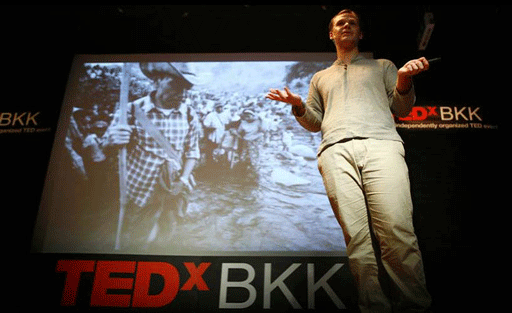
Ryan Libre is an award-winning documentary photographer and the founder of Documentary Arts Asia (DAA), a non-profit organization working to tell stories from Asia that need to be heard. The organization was conceived in 2008 after Ryan’s work on NGO documentary projects brought Asia’s need for visual literacy education to his attention.
In 2011, he was awarded he Howard Chapnick Grant, part of the W. Eugene Smith Memorial Fund, to build a physical space for the organization. Three years later, DAA flourishes in its mission. The DAA center supports documentary artists in Asia with various amenities including a gallery, a library and a workshop space.
We caught up with Ryan to learn more about DAA’s current role in providing community and resources for Asia’s storytellers and what’s next for his organization and his career.
MediaStorm: What did you hope to accomplish when you started the Documentary Arts Center?
Ryan: I wanted to raise the interest in and an awareness of documentary photography and film in Southeast Asia. From there my goal for the organization was to find talented, local emerging and established photographers to support.
Why is visual literacy important?
Right now kids spend a lot of time learning to read the written word. But the visual image, still and moving, is increasingly where people get their information. It shapes their world view and life choices. I want people and institutions to make visual literacy training a higher priority.
And why was it important to have the Center in Thailand?
Chiang Mai is a major hub and crossroads for Southeast Asia. Lots of ideas are born and shared there. The idea of DAA is to have a center in most Asian countries, but still most governments in the region are not as open to NGO’s and showing sensitive or critical work. Chiang Mai is known as the cultural and art capital of Thailand. So it was a perfect choice for the first center. We now have a second center in N. Burma. Inside the Kachin Independence autonomous region. The gallery/library/cinema is just 11 kilometers from front line fighting in a region with very few if any resources for aspiring documentary photographers. I hope to open more DAA centers like this in the future.
You were awarded the Howard Chapnick Grant in 2011. How did the grant impact your organization?
Well, before the Chapnick Grant we had no physical center and were mostly known only by a few photographers N Burma. After Chapnick we were able to open a beautiful center and it helped a lot with recognition also. After the ceremony I stayed in NYC for a few weeks and it opened up a lot of doors for me to meet great people to talk about DAA.
What initiatives have the Center’s focus now?
Right now we’re building a new center! 5,000 square feet. It may sound like we are rolling in money now, but the land was donated and we are designing and building it ourselves from adobe bricks and straw-bales.
What lessons did you learn launching your organization?
Wow, I’ve learned so much, personally and professionally. One of the main things is the power of design. A nice logo, website and posters are powerful tools for advancing your message. I’ve also become a much better photo editor, for others works and my own.
How can readers support the work you’re doing?
A couple ways:
- Join a workshop – our photo and film workshops are very affordable and half of the fees support the artist, with the remaining half reinvested into our programs.
- Buy a print from one of our exhibitions, or choose from the many matted prints for sale at the center.
- Become a member – both paid and unpaid memberships help us.
- Give in-kind gifts to our artist in residence program – such as meal or drinks vouchers.
- Donate a portion of your tax money to DAA. You can write it off your taxes so it costs you nothing!
- Donate a print for our annual silent auction.
- Give DAA something from our center wish list or a book from our library wish list.
- Donate online – DAA keeps its overheads low so that every penny, baht & yen goes to useful projects.
More information on all of these options is available on our site.
Are you working on anything outside of the center? Can we expect any new projects from you?
I’m finishing a feature length documentary, When Will It Be, about the Kachin Independence organization. I’m looking for a publisher to publish a book of the stills from this 6 year project as well.
After those projects finish I have a long list of projects I’m dying to shoot.
About the Howard Chapnick Grant
In 1996 the W. Eugene Smith Memorial Fund announced a new award, the Howard Chapnick Grant, to honor the memory of Howard Chapnick, and acknowledge the value of his enormous contribution to photography.
The annual $5,000 grant may be used to finance any of a range of qualified undertakings, which might include a program of further education, research, a special long-term sabbatical project, or an internship to work with a noteworthy group or individual. Special consideration will be given to projects that promote social change and/or serve significant concerns of photojournalism.
Applications are due July 16, 2014. Learn more and apply at http://smithfund.org/howard-chapnick-grant.

